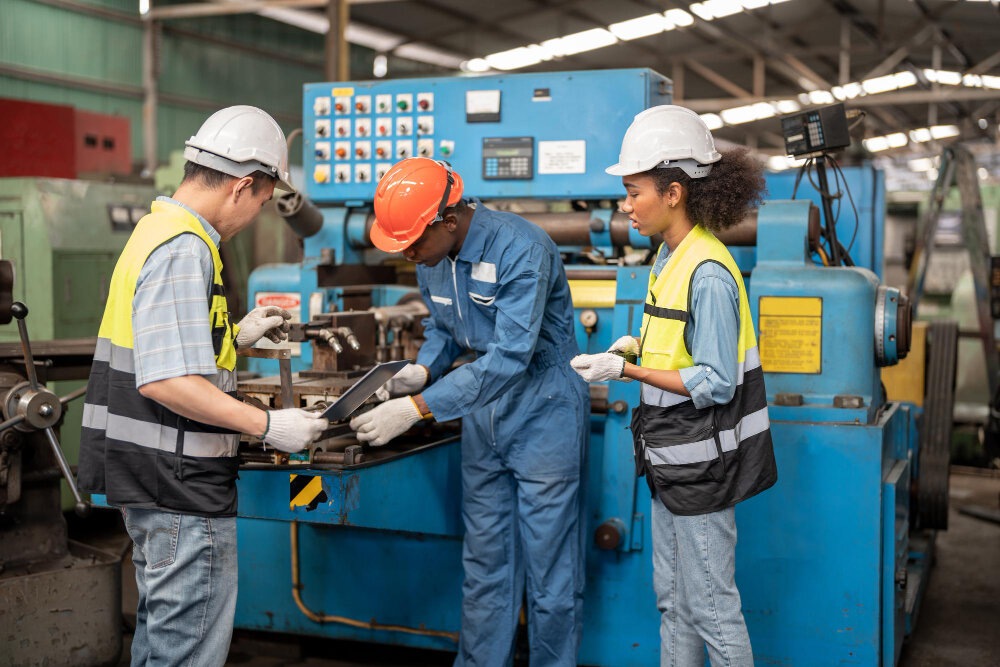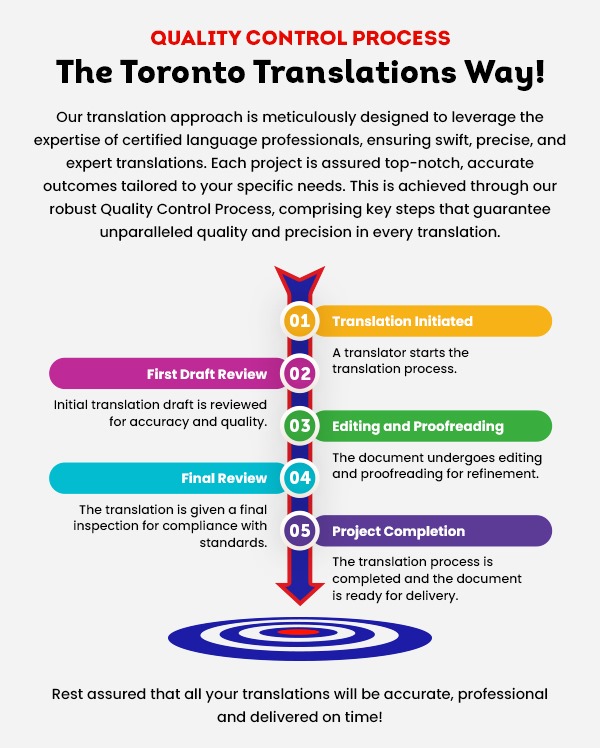Mastering Manufacturing: Technical Manual Transitions for Your Manufacturing Business

Manufacturing is an evolving process, constantly changing alongside the needs of humans, and modern day technology.
Operating technical machines or products in the manufacturing industry usually requires a diverse range of skills and a solid attention to detail. For the manufactured machinery or product to function perfectly, there must be a standardized process that engineers and technicians must conform to. This is why a technical manual is so important. It ensures that manufactured products work perfectly in a standardized manner that is repeatable, and scalable.
However, creating a technical manual is no walk in the park. It requires attention to detail, awareness of global best practices, safety profiling, global accessibility of translated copies, and many more. A technical manual guides technicians (regardless of skill level) through the entire operating process one step at a time.
In this article, we’ll provide a detailed breakdown of how to create a technical manual from start to finish. We’ll also be showing you how to ensure that the technical manual is readily available and accessible to the global market in local languages with the aid of top-line translation services.
The Importance of Technical Manuals in Manufacturing

Manufacturing is part of our livelihood. It exists because we find ways to make our lives easier, better and more fulfilling each day. From simple contraptions like levers and pulleys, which help with daily tasks, to massive projects like super colliders and particle accelerators used to explore the workings of the universe and, as such, further drive innovations that better mankind collectively, the place of manufacturing cannot be overlooked.
This even affects what we eat, how we make and consume them, how we farm, what we wear, the books we read, our home utensils, and work apparatus; in fact, the entirety of human existence as we know it is built on manufacturing. It’s a very diverse industry, cutting across different manufacturing sectors, from automobiles to clothing, food, technology, pharmaceuticals, cosmetics, and many more.
Technology has come a long way which naturally has affected how we operate products.
Machine operation can be pretty complex, requiring a how-to guide that ensures that anyone, anywhere, who follows the same process, can replicate and achieve the same results. A technical manual passes on knowledge of operating processes and systems which people can either replicate, optimize and/or build upon to ensure that they can meet the needs and demands of those who require whatever product is to be operated.
With the abounding number of highly complex products in the manufacturing industry ongoing globally, a technical manual is critical to ensuring that these products are operated in a safe, compliant and efficient manner consistent with global best practices.
Technical manuals ensure operational efficiency helping technicians get the job done in time. They are a safety net providing clear instructions on how to handle emergencies and potential hazards.
However, there are a number of challenges people encounter in creating a technical document. The first challenge a person must battle while creating a technical manual is the issue of relevance. Technical manuals must keep up with the latest trends and innovations in the space the document refers to.This is to ensure that the information contained in the document isn’t outdated and obsolete.
Technical accuracy is also an important challenge that must be dealt with in a technical manual. An error in a manual can result in very severe and costly damages that may have heavy repercussions to life, property, and, in some cases, even the community where the product/machine is being operated. Technical accuracy is cardinal as it lays the groundwork for how the product will function and if it will do so optimally without any resulting damage.
One of the key reasons for translation is to ensure a standardized and consistent operating process worldwide, regardless of where the operation is taking place. Therefore one of the key challenges a technical manual must address is ensuring that the document can be localized for different countries and regions by way of quality translation services.
Key Elements of Effective Technical Manuals
There are three key elements of an effective technical manual. They include Audience Identification, Clarity and Conciseness, and The Use of Visual Aids.
Audience Identification
One of the first steps in creating a manual is determining the intended user or target audience. This may affect engineers, operators, maintenance personnel, and so forth. A user with low to moderate technical competence and one with high expertise have very distinct levels of experience. While individuals with basic or intermediate levels of operational expertise may require a more thorough approach with word definitions and extensive breakdowns to lead them through each step of the operating process.
An individual with expert knowledge and high-level project experience in the industry may require far fewer details. They most likely may comprehend high-level technical terms and would only need overview guidance to be pointed in the right direction.
An effective technical manual must be able to consider these and cater to the different categories of industry technicians.
Clarity and Conciseness

As we have earlier established, manufacturing can be a pretty complicated industry. In fact, things can get very confusing fast without any form of guidance, especially when newbies with basic industry experience encounter new products/machines.
That's why manufacturing technical manuals are crucial must-haves, not optional suggestions. A technical manual helps to break down complex information into simple and actionable steps.
Technical manuals are like a guidebook for operational purposes. As a result of the comprehensive nature of these technical documents, they may be quite voluminous and overwhelming if not structured and formatted properly. It is best practice to have them created in a simple, concise and easily readable manner.
The manufacturing space is already a relatively complex industry, and as such, there’s no need to make guidebooks any more complex than they should. The objective is to create a document that will break down complex terms and make operational processes easier to follow and implement.
The manual should be formatted with the use of headings, subheadings, adequate line spacing, paragraph indentations, short and concise sentences. (maximum of 20 words per sentence). It should also include bullet points and numbered lists where necessary.
Visual Aids
In almost every discipline known to man, learning is always enhanced by the use of visual aids. This is especially true in practical disciplines or industries like manufacturing that have diverse aspects of real-life application. Particularly when embarking on operating complex technical products/machines. People typically find that documents with illustrations or visual aids are easier to understand and implement.
Integrating elements like flowcharts, diagrams, and pictures to explain intricate operational processes and procedures will make your technical manual way easier to read, understand, and apply when fixing or operating a product. Appropriately labeled visual aids alongside the right captions or illustrative/explanatory texts to go with them are an invaluable resource. When illustrations are accompanied by texts labeling parts, or calling out processes, it makes comprehension a whole lot easier and makes the entire operating process a lot faster.
Besides visual elements, interactive components also ensure that your technical manual is a lot more user-friendly and easy to understand. Including interactive elements like videos, links to resource materials, sign-up forms, and many more ensures that technicians not only read but engage with the document. Including elements that can help users even directly link to your mailbox to ask questions or get personalized one-on-one assistance can greatly improve the value of a technical guide.
Ensuring Accuracy and Consistency
Technical manuals are fundamental pillars of the global manufacturing industry. The manufacturing industry is massive. It covers everything from food manufacturing to clothing, cosmetics, automobile, aerospace, and many more. Without technical manuals guiding the operational process, efficiency in these sectors would be virtually impossible.
However, to pull this off, the accuracy and consistency of the technical documents is vital. Even the smallest errors in intricate operational procedures might jeopardize the product functionality as a whole. This is why technical manuals for products/machines need to be thorough, in-depth, and all-encompassing. The technical manuals need to be reliable, up-to-date, and standardized, as these are the blueprints that the operating technicians would rely on.
Accuracy ensures that your manual is free from technical errors and aligns with the latest industry trends and innovations. It's like having a trusted guide that shows your team how to get the job done right. A properly drafted technical manual could be the difference between a risky product/machine and one that runs smoothly. Technical manuals that are properly drafted usually follow best safety and operational practices and are detailed and comprehensive, ensuring the product's usefulness and user safety. However, poorly written technical manuals endanger the entire product/machine as well as the lives and safety of the end-users.
Consistency, on the other hand, means that your technical manual is standardized and compliant with global best practices. Manufacturing is a universal reality, and as such, operating processes across different countries and or regions must be consistent to achieve the same or similar results.
Together, accuracy and consistency create a powerful combination that ensures your team of technicians have the right information to work efficiently and safely. To achieve this, your technical manual needs to be thorough, detailed, and comprehensive. It should cover everything from standard operating procedures to safety protocols, maintenance schedules, technical specifications, and more.
The Necessity of Translation in Global Manufacturing

Consumer demands have changed considerably and, indeed, are still changing and evolving. People now want higher-quality goods, and they want these provided at a much faster rate. They also want a higher degree of personalization for their products, which is difficult to quantify in a traditional mass-production-focused setup.
Thanks to on-demand style systems that have appeared elsewhere, countries' approaches to problem-solving and solution-building are becoming increasingly global in scope.
Consequently, a technical manual needs to be flexible enough to educate users wherever they may be in need of its solutions. Technical manuals ensure that manufacturing outfits can consistently deliver valuable products to meet the demands of users and customers worldwide without sacrificing quality or speed. Technical manuals provide comprehensive and detailed guides that ensure that the same quality result achieved in one part of the world can be achieved in another as long as the same process is followed.
To achieve this technical manuals must be localized and accessible in different countries by way of translation. A manufacturing technical manual needs to be available in several languages in order to serve the needs of the multicultural and international operating workforce.
Best Practices for Translating Technical Manuals
As discussed above, translating technical documents into localized languages is necessary to ensure that your document is accessible and readily available to global demand. Below are some of the best translation practices which ensure that your technical manual can still meet its requisite objectives after it has been translated.
1. Choose the right translation partner.
Choosing the right translation partner is not an easy task, as there are literally thousands of companies providing this service. However, very few have the expertise, certification and industry experience to pull off the translation of a technical manual effectively.
In choosing the right translation partner, you have to look out for their industry experience. Your translation partner has to be well-versed in the industry to be familiar with technical terms unique to it. They also have to be certified at the highest level possessing industry-recognized certifications, such as ISO 17100, and adherence to standards like ASTM, ASME, or DIN.
Finally, a track record of providing successful translation services in the same industry or a similar industry is a key element to look out for. Toronto Translations ticks all these boxes, with a team of experts who are experienced in the manufacturing industry, a track record of delivering exceptional and top-line translation of technical manuals to thousands of clients, as well as ISO17100 industry certification and compliance to ASTM, ASME and DIN standards.
If you’re in search of a translation partner for your technical documents, look no further than Toronto Translations.
2. Collaborate with local language experts to ensure that context is properly transferred to the translated document.
One of the major limitations in translating technical documents is ensuring that the translated documents reflect the actual context of the source document. This is because there are a lot of industry terminologies and lexicons that are specific to the manufacturing industry and may not have readily available equivalents in the local parlance being translated.
The way to ensure that translation still occurs effectively without mortgaging the context in which the source document was written is to collaborate with local language experts to ensure that whatever term would be used in the local language translation can convey the same meaning, context and objective from the source document.
This is a strong point of Toronto Translations. As a result of our years in the industry, translating thousands of documents, we have a strong network of local language experts which we engage for each translation project to ensure that the proper context is conveyed from the source document.
3. Ensure the document passes through a rigorous quality control process
Quality control is integral to the success of any translation. The document must be subjected to a rigorous and stringent quality control process across each stage of the translation process. In choosing the right translation partner, closely examine their quality assurance process to determine how effective and detailed they are before hiring.
Toronto Translations possesses a very rigorous quality control process, ensuring that the translated document is double-checked at each stage and judiciously probed for technical or language errors, ensuring that only perfect documents make it to the client. Looking for a translation partner? Toronto Translation is your sure bet.

Technical Translation Solutions for Manufacturing Manuals
Technical guides are essential resources that let experts from various parts of the world understand product/machine qualities, how it works, operates and how technicians will fix the machine or product. These instructions must, therefore, be up to date with the most recent technological advancements and technical trends. Technical manuals that are prepared correctly typically adhere to manufacturing standards and best practices, guaranteeing the product's value and safety.
This is why you need Toronto Translations on your next technical translation project. With over a decade of experience and thousands of technical documents translated for clients worldwide, we can ensure that your next document gets the proper top-line translation service it deserves.
Get started with Toronto Translations today.
Don't Wait a Second Longer! Let Technical Translations Services Translate Your Document Today!
905-581-9968









 French Translation
French Translation